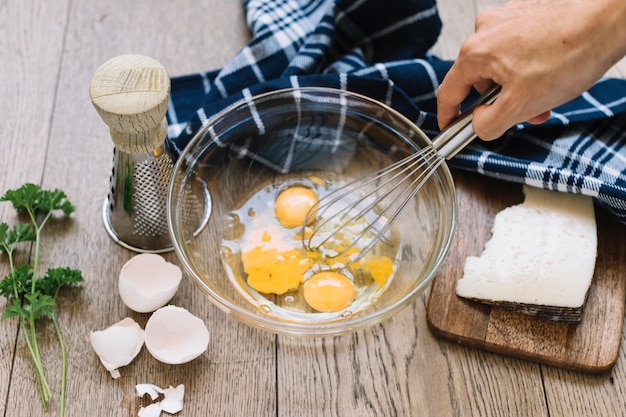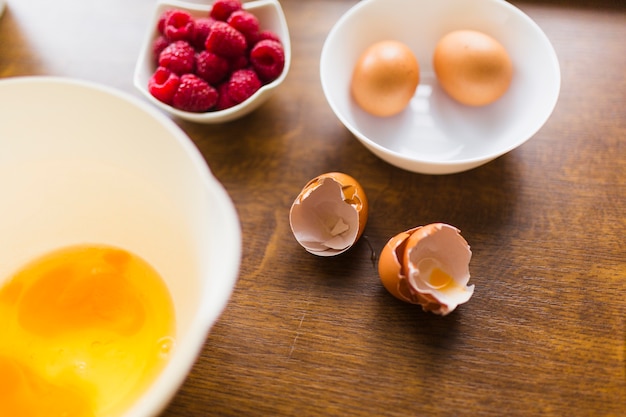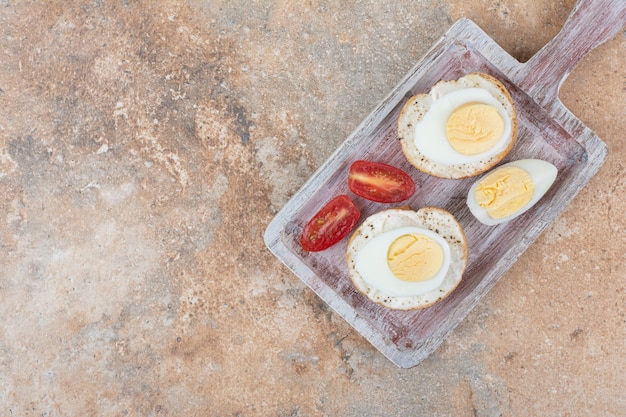poached eggs. The very thought evokes images of that luxurious, runny yolk, cradled by delicate, pillowy whites, a breakfast dream come true. But let's be real – we've all stared down at a simmering pot of water, hoping for a perfect poached egg, only to end up with something resembling a rubbery, sad-looking pancake.
But fear not, my fellow culinary adventurers! After years of experimentation, countless kitchen mishaps, and more than a few burnt fingers, I've cracked the code to achieving consistently perfect poached eggs, and I'm ready to share my secrets. From the right pot to the optimal simmering temperature, I'll walk you through my foolproof method, sharing tips and tricks I've picked up along the way. You'll be surprised at how simple it can be to master this seemingly daunting culinary feat.
(Part 1) The Perfect Poached Egg: A Culinary Odyssey

My personal journey to poached-egg perfection, much like many culinary adventures, began with a series of spectacular disasters. I still vividly recall my first attempt. Armed with nothing but a saucepan and a head full of naive optimism, I plunged a raw egg straight into the boiling water, expecting it to miraculously transform into a culinary masterpiece. The result? A scrambled mess, clinging desperately to the bottom of the pan, a testament to my inexperience and a stark reminder of the challenges that lay ahead.
Undeterred, I pressed on, absorbing everything I could from cookbooks, online articles, and even the occasional grandma's recipe. I experimented with various types of vinegar, from classic white to adventurous balsamic, hoping to find the secret ingredient. I even dabbled with a splash of lemon juice, convinced that some magical coagulation effect was hiding within its citrusy tang.
But it wasn't until I started paying close attention to the nuances of heat and the crucial role of water movement that my poached eggs truly started to sing. I discovered that a gentle simmer, not a full-blown boil, was the key to creating those beautifully silken whites and the coveted runny, golden yolk. And the secret to preventing the eggs from sticking? A swirling motion of the water, creating a mini whirlpool that kept the whites from settling on the bottom.
So, join me on this culinary odyssey. Let's delve into the intricate art of poaching eggs, uncovering the secrets to achieving those heavenly, runny yolks and perfectly set whites, transforming your kitchen into a haven of culinary triumph.
(Part 2) Choosing the Right Tools: Your culinary arsenal

Before we dive into the actual poaching process, let's first assemble our culinary arsenal. You don't need a fancy kitchen gadget to create perfect poached eggs; a few essential tools will do the trick.
2.1 The Perfect Pot: Your Culinary Canvas
First and foremost, you need the right pot, your culinary canvas. A saucepan with a wide base and straight sides is ideal. The wide base ensures even heat distribution, guaranteeing a consistent simmer. The straight sides prevent the eggs from sticking to the sides, helping you create those perfectly round, symmetrical poached masterpieces.
I personally prefer a medium-sized saucepan, around 2-3 liters in capacity. It's large enough to accommodate a few eggs comfortably without overcrowding, but not so large that it takes forever to bring the water to the perfect temperature.
2.2 A Slotted Spoon: Your Egg Retriever
Next up, a slotted spoon is your indispensable egg retriever. Look for one with wide, flat slots that allow the water to drain easily without breaking the delicate egg. You don't want to end up with a broken yolk situation!
2.3 A Ladle: Your Water Maestro
A ladle is another indispensable tool, especially when you're poaching multiple eggs. Use it to carefully pour the simmering water over the eggs, creating that gentle whirlpool that keeps the whites from sticking.
2.4 A Small Bowl: Your Egg Cradle
Finally, a small bowl is your egg cradle. Gently crack the egg into the bowl first, ensuring that the yolk remains intact. This allows you to remove any pesky bits of shell before gently sliding the egg into the simmering water.
(Part 3) fresh eggs: The Foundation of Perfection

Now, let's talk about the star of the show: the eggs themselves. The quality of your eggs plays a significant role in the final result. Fresh eggs are key to achieving that perfect texture. They have a firmer yolk, which means they hold their shape better during the poaching process, allowing you to create those coveted runny yolks that everyone craves.
How do you know if your eggs are fresh? Look for a "best before" date and try to use eggs within a week of that date. If you're unsure, you can also perform the float test. Simply place the egg in a bowl of cold water. If it sinks to the bottom and lies flat, it's fresh. If it stands upright or floats, it's older and might be a bit watery, potentially affecting the texture of your poached egg.
(Part 4) The Temperature Tango: Mastering the Simmer
Now, let's discuss the heart of the matter: the water temperature. The key to perfect poached eggs lies in achieving a gentle simmer, not a raging boil. A rolling boil will cook the eggs too quickly, resulting in tough whites and a hard yolk – definitely not the ideal outcome for a poached egg enthusiast.
To achieve that perfect simmer, bring the water to a gentle simmer over medium heat. You'll know it's ready when you see tiny bubbles forming at the bottom of the pot and rising to the surface. The water should be gently bubbling, not churning violently.
Once the water is simmering, add a splash of vinegar. This helps to coagulate the egg whites, creating a smooth, pillowy texture. A tablespoon or two of white vinegar is usually enough, but feel free to experiment with different types. I personally enjoy apple cider vinegar, but the choice is yours.
(Part 5) The Poaching Process: A Balancing Act
Now comes the moment of truth: the actual poaching process. This is where precision and patience are key. Remember, the goal is to create a gentle whirlpool that prevents the egg white from spreading too much, ensuring a perfectly round, symmetrical shape, a true testament to your culinary finesse.
5.1 Preparing the Egg: The First Step
Crack the egg gently into a small bowl, ensuring that the yolk remains intact. If there are any pieces of shell, carefully remove them with your finger or a spoon. A little bit of shell won't ruin the egg, but it's not the most aesthetically pleasing sight.
5.2 Swirling the Water: The Gentle Whirlpool
With the water gently simmering and the vinegar added, carefully pour the egg into the center of the pot. The water will immediately start to swirl around the egg, creating a mesmerizing visual effect.
5.3 Maintaining the Whirlpool: A Steady Hand
Use a ladle to gently create a whirlpool around the egg. This helps to keep the egg whites tightly bound together, creating a perfectly round shape. Avoid stirring the water aggressively, as this will break up the whites and create a less appealing texture. Your goal is a gentle, consistent swirling motion, like a miniature whirlpool in your pot.
5.4 cooking time: Finding Your Perfect Doneness
The cooking time depends on your preferred level of doneness. For a runny yolk, cook the egg for 3-4 minutes. For a firmer yolk, cook for 5-6 minutes. It's a matter of personal preference. Some prefer that intensely runny yolk, while others enjoy a slightly firmer texture.
(Part 6) Retrieving the Eggs: A Gentle Touch
Once the eggs have reached your desired level of doneness, carefully remove them from the water using a slotted spoon. Gently lift the egg from the water and let it drain on a plate lined with kitchen paper.
Remember to handle the eggs gently to prevent them from breaking. The whites should be cooked through, but the yolks should still be soft and runny, a testament to your mastery of the poaching process.
(Part 7) Serving the Poached Eggs: A Culinary Canvas
Now that you have your perfect poached eggs, it's time to unleash your culinary creativity. Poached eggs are incredibly versatile and can be enjoyed in countless ways.
A classic breakfast combination is poached eggs on toast, sprinkled with salt and pepper, a simple yet satisfying combination. For a luxurious touch, add a dollop of homemade hollandaise sauce, transforming a simple breakfast into a decadent affair.
For a lighter meal, try poaching the eggs and serving them on a bed of spinach with a squeeze of lemon juice, a refreshing and healthy option.
Get creative and experiment with different flavors and toppings! The possibilities are endless. You can add a sprinkle of smoked paprika, some diced avocado, or even a dollop of pesto.
(Part 8) Frequently Asked Questions: Your Culinary Guide
Here are some frequently asked questions about poaching eggs, ensuring that your culinary journey is smooth and successful.
8.1 What if the egg whites stick to the bottom of the pot?
If the egg whites stick to the bottom, it usually means the water temperature is too high. Reduce the heat slightly to create a gentler simmer. Also, ensure you create a whirlpool around the egg to keep it from settling on the bottom.
8.2 What if the yolk breaks?
Don't worry, a broken yolk doesn't ruin the egg! It will still be delicious, just slightly less visually appealing. You can try to gently nudge the yolk back into place with a spoon, but it's perfectly fine to leave it as it is. The taste remains the same.
8.3 Can I use a different type of vinegar?
Yes, you can use different types of vinegar. Apple cider vinegar, balsamic vinegar, or even lemon juice can be used. However, white vinegar is the most traditional choice. Experiment and find what works best for your taste.
8.4 What if I don't have a slotted spoon?
If you don't have a slotted spoon, you can use a small strainer or even a large spoon to gently lift the egg from the water. Just be careful not to break the delicate egg.
8.5 How do I store leftover poached eggs?
Poached eggs are best eaten fresh, but if you have any leftovers, you can refrigerate them for up to 2 days. To reheat, gently simmer them in a saucepan of water for a few minutes.
(Part 9) The Poached Egg Revolution: Your Culinary Calling
Poaching eggs is a culinary journey that requires patience, practice, and a dash of experimentation. But once you master the art, you'll be rewarded with a breakfast (or lunch or dinner) that is truly divine.
Don't be afraid to experiment with different techniques and toppings. Embrace the journey, learn from your mistakes, and enjoy the process. Your taste buds will thank you. And so will your inner foodie.
(Part 10) A Culinary Triumph: A Perfect Poached Egg
Now, let's talk about the most satisfying part of this journey: the moment you finally achieve that perfect poached egg. The silky whites, the runny yolk, the way it slides effortlessly onto your toast, and melts in your mouth with every bite. It's a culinary triumph, a testament to your perseverance and dedication to the art of poaching eggs.
So, go forth, dear friends, and conquer the kitchen! Master the art of poaching eggs, and enjoy the delicious rewards that await. You'll be amazed at how easy it can be to create a culinary masterpiece that is both visually stunning and incredibly delicious.
(Part 11) The Poached Egg Revolution Continues: A Culinary Journey
My journey into the world of poached eggs is far from over. I'm constantly experimenting, looking for new ways to improve my technique, and finding unique and creative ways to enjoy this culinary delight.
Join me on this journey. Share your tips, your triumphs, and your occasional kitchen mishaps. Let's continue to explore the endless possibilities of the humble poached egg and create a culinary revolution, one perfectly poached egg at a time.
(Part 12) Beyond the Plate: The Versatility of Poached Eggs
The beauty of a perfect poached egg lies not only in its delicate texture and rich flavor but also in its versatility. It transcends the boundaries of breakfast, adding a touch of elegance to any meal.
Imagine a poached egg nestled atop a bed of creamy risotto, the runny yolk mingling with the savory rice, creating a symphony of textures and flavors. Or consider a poached egg gracing a salad, its creamy richness complementing the crisp greens and fresh vegetables.
Poached eggs are a culinary chameleon, effortlessly adapting to any dish and adding a touch of gourmet flair.
(Part 13) The Science of Poaching: Unveiling the Secrets
Behind the seemingly simple art of poaching lies a fascinating interplay of science and technique. Understanding the science behind poaching helps us create a perfect egg every time.
The key lies in the coagulation of egg proteins. When an egg is heated, the proteins in the egg white denature and solidify, creating the characteristic white texture. The vinegar, added to the simmering water, helps to lower the pH, facilitating the coagulation process and creating those smooth, silky whites.
The delicate dance between heat and time is crucial. A gentle simmer allows the egg white to cook slowly, resulting in a tender, pillowy texture. Overcooking, on the other hand, leads to tough, rubbery whites.
The runny yolk is a testament to the fact that the center of the egg remains relatively cool, as the heat from the simmering water takes time to penetrate.
(Part 14) The Poached Egg Connoisseur: Elevating Your Skills
As you delve deeper into the world of poached eggs, you'll discover that there's always something new to learn, a new technique to master, or a new flavor combination to explore.
Here are some tips for elevating your poached egg game:
- Try using a ramekin or a small heat-proof bowl to poach your eggs. This helps to contain the egg white and create a perfectly round shape.
- Experiment with different types of vinegar, such as apple cider vinegar or balsamic vinegar, to add a touch of flavor to your eggs.
- For a more luxurious experience, try poaching eggs in a rich broth or a flavorful sauce, adding another dimension of flavor to your dish.
- Explore the world of poached egg toppings. Get creative with herbs, spices, cheese, or even a dollop of sour cream.
Poaching eggs is a journey of discovery, an exploration of culinary finesse, and a testament to your passion for delicious food. Embrace the journey, and let your culinary creativity soar!
(Part 15) Poached Eggs: A culinary legacy
Poached eggs are more than just a breakfast staple; they are a culinary legacy, a testament to centuries of culinary tradition and a symbol of simplicity and elegance.
From the bustling cafes of Paris to the cozy kitchens of London, poached eggs have captured the hearts and stomachs of food enthusiasts worldwide. They are a versatile ingredient, a culinary chameleon that adapts to any dish, transforming simple ingredients into a gourmet experience.
The art of poaching eggs is not just about mastering a technique but about appreciating the delicate interplay of flavors, textures, and culinary finesse. It's a journey that starts in the kitchen and ends with a symphony of flavors on your plate, a testament to your culinary mastery.
Everyone is watching

Perfect Rice Every Time: The Ultimate Guide to Cooking Rice
Cooking TipsAs a self-proclaimed foodie, I've always been a bit obsessed with rice. It's the foundation of countless cuisi...

Prime Rib Roast Cooking Time Chart: Per Pound Guide
Cooking TipsPrime rib roast. Just the name conjures images of lavish dinners, crackling fires, and hearty laughter. It’s ...

The Ultimate Guide to Cooking Asparagus: Tips, Techniques, and Recipes
Cooking TipsAsparagus. The mere mention of this spring delicacy conjures up images of vibrant green spears, crisp and burs...

Ultimate Guide to Cooking the Perfect Thanksgiving Turkey
Cooking TipsThanksgiving. Just the word conjures up images of overflowing tables laden with delicious food, the scent of r...

How Long to Bake Potatoes in the Oven (Perfect Every Time)
Cooking TipsBaked potatoes are a staple in my kitchen. They're incredibly versatile, delicious, and surprisingly easy to m...
